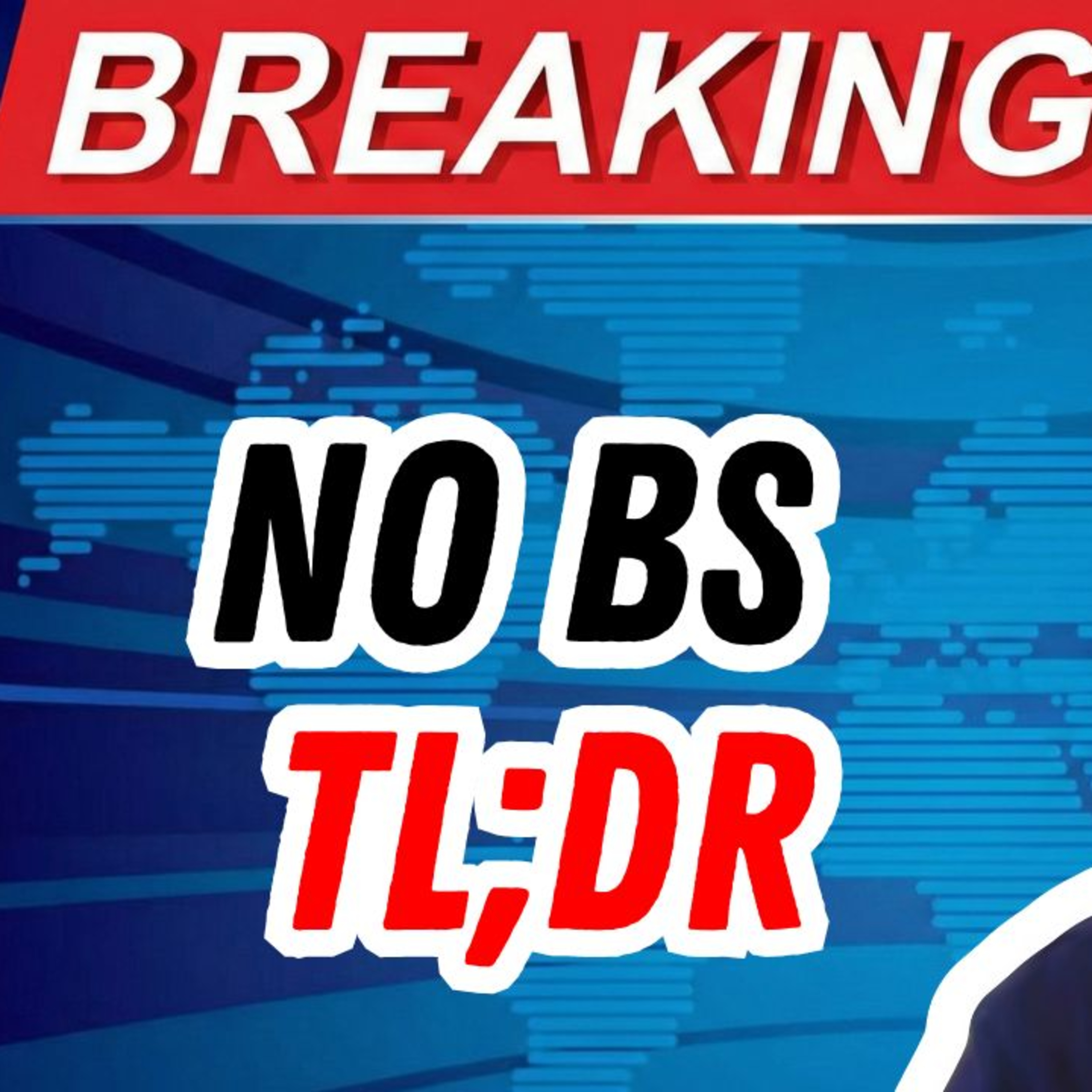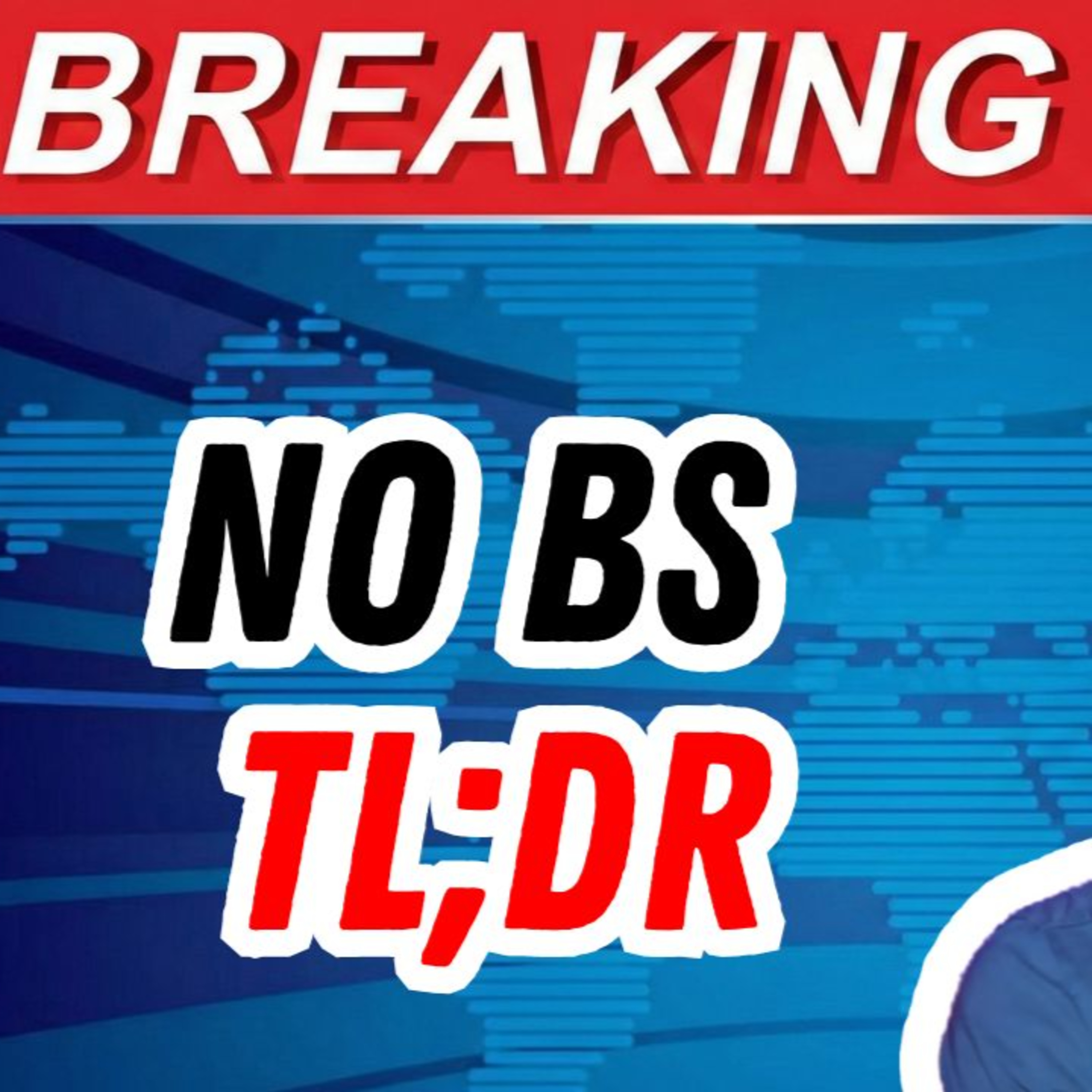How to conquer the farming games market? Minigames FTW. Implement or die by Matej Lancaric!
In this new segment, I explore the farming games market, its growth, key players, revenue insights, and player engagement strategies. I also discuss the importance of retention rates, monetization strategies, and mini-games emergence as a crucial trend.
The conversation highlights opportunities for new entrants in the market and emphasizes the need for innovation and an understanding of player demographics. The episode concludes with final thoughts on the evolving landscape of farming games and the commitment required for success.
Yours, Matej!
This is no BS gaming podcast 2.5 gamers session. Sharing actionable insights, dropping knowledge from our day-to-day User Acquisition, Game Design, and Ad monetization jobs. We are definitely not discussing the latest industry news, but having so much fun! Let’s not forget this is a 4 a.m. conference discussion vibe, so let's not take it too seriously.
Panelists: Matej Lancaric
Youtube: https://youtu.be/GYLX2zAbjks
Join our slack channel here: https://join.slack.com/t/two-and-half-gamers/shared_invite/zt-2um8eguhf-c~H9idcxM271mnPzdWbipg
Chapters
00:00 Introduction to Farming Games Market Dynamics
02:13 Market Growth and Key Players
05:39 Revenue Insights and Performance Metrics
12:20 Retention Rates and Player Engagement
18:36 Monetization Strategies in Farming Games
22:54 Opportunities for New Entrants in the Market
25:37 Final Thoughts on the Farming Games Landscape
---------------------------------------
Matej Lancaric
User Acquisition & Creatives Consultant
https://lancaric.me
Felix Braberg
Ad monetization consultant
https://www.felixbraberg.com
Jakub Remiar
Game design consultant
https://www.linkedin.com/in/jakubremiar
---------------------------------------
Takeaways
Farming games have a significant market share and growth potential.
Key players like Township and Hay Day dominate the genre.
Revenue insights reveal Township's impressive earnings compared to competitors.
Retention rates are crucial for long-term success in gaming.
The emergence of mini-games enhances player engagement and retention.
Social features are vital for community building in farming games.
Understanding player demographics is essential for targeting.
Investing in high-quality creatives is necessary for market competitiveness.
---------------------------------------
Please share the podcast with your industry friends, dogs & cats. Especially cats! They love it!
Hit the Subscribe button on YouTube, Spotify, and Apple!
Please share feedback and comments - matej@lancaric.me
---------------------------------------
If you are interested in getting UA tips every week on Monday, visit lancaric.substack.com & sign up for the Brutally Honest newsletter by Matej Lancaric
Latest article - https://open.substack.com/pub/lancaric/p/match-3d-ua-playbook-real-data-inside?r=7qqaf&utm_campaign=post&utm_medium=web&showWelcomeOnShare=true
Do you have UA questions nobody can answer? Ask Matej AI - the First UA AI in the gaming industry! https://lancaric.me/matej-ai
Felix Latest Article -
https://www.felixbraberg.com/post/the-end-of-gam-and-admob-placement-refreshes
Press play and read along
Transcript
Speaker 1 Farming markets is around like 70% IPs to 30% ads.
Speaker 1 On the other hand, Felix would disagree
Speaker 1
and would say this should be way more. On the other hand, I would say this should be a little bit less.
Farming games, I don't see the lot of placements
Speaker 1 opportunities in the farming game genre or the subgenre.
Speaker 1 That's why I think this is never gonna be 50-50 hybrid and split.
Speaker 2 This is a no-bullshit gaming show where we talk about games and their revenue in great detail, powered by our ad monetization, game design, and user acquisition triple threat expertise.
Speaker 2 Welcome to the two and a half gamers, the unfiltered truth served with a side of giggles.
Speaker 2 Let's not forget this is a 4am conference discussion vibe, so let's not take it too seriously. Tune in now and stay two and a half steps ahead of the gaming industry.
Speaker 1 Hello everyone, welcome.
Speaker 1 This is
Speaker 1 a new segment which
Speaker 1 I'm gonna call
Speaker 1 ASMR Insights because I have I had this idea
Speaker 1 about
Speaker 1 us sharing different topics, and it's gonna be me and only me today.
Speaker 1 In the next session, it's gonna be someone else. Yeah, keep uh I will keep you posted for sure.
Speaker 1 So, in this episode, I'm gonna talk about how to conquer farming games market, because there's millions of players worldwide and nobody's talking about.
Speaker 1 And I'm gonna also show how I play Archer 2 on the screen while I'm gonna talk.
Speaker 1 So for us, our YouTube listeners
Speaker 1 and watchers, you can actually check it out and obviously listen to what I'm gonna say.
Speaker 1 So the farming games market presents both significant opportunities and formidable challenges. With the steadily growth
Speaker 1 and the growing audience over the past decade, this random continues to captivate millions of players worldwide.
Speaker 1 We have multiple games in this randra and I'm gonna talk about few
Speaker 1 best performers and the top ones.
Speaker 1 And when we're talking about the market share, obviously we can't skip talking about the heyday, township, cologne, Idol Lumber Empire.
Speaker 1 And we have some others like Dragon Scapes Adventure from our friends from Century Games.
Speaker 1 So in this episode, I'm going to talk about the current market state, the highlight key trends, and offer actionable insights for developers and marketers looking to enter or expand their presence in this very competitive space.
Speaker 1 So
Speaker 1 what are the market growth and dynamics?
Speaker 1 The farming games market has experienced consistent growth over the last eight years, with major markets like United States, Japan, Germany, and United Kingdom driving this expansion.
Speaker 1 So we're looking at the US on the first spot. I mean, I'm talking about, let's say, Q1 this year, which is Q1 2024.
Speaker 1 If you are looking at US, Japan, Germany, UK, Canada, South Korea, France, Australia, and maybe China and other markets, US is basically just bringing almost 70% of the whole revenue. Maybe 50%
Speaker 1 is a better statement. I'm looking at
Speaker 1 Q1 overall of
Speaker 1
the games I mentioned. It's $300 million in terms of the revenue.
150 million is coming from the US.
Speaker 1 Only 27 million coming from Japan. And then we have Germany with 22 million, United Kingdom with 14 million, and then the rest
Speaker 1 is
Speaker 1 not that meaningful.
Speaker 1 It's already going down.
Speaker 1 According to market research, the global gaming market is projected to reach 270 billion by 2025, and with the simulation and farming subgenres accounting for a significant portion of this growth.
Speaker 1 Specifically, the current farming games market is expected to grow
Speaker 1 at
Speaker 1 6.3%
Speaker 1 annual growth rate, which is from 2020 to 2025.
Speaker 1 So titles like Township and Heyday continue to dominate the genre, with millions of active users. So looking at Township
Speaker 1 and
Speaker 1 with the monthly active users aloha, you know what? Let's uh let's let's call this weekly. We can talk about monthly as well afterwards, in the later stages of this episode.
Speaker 1
Well, we're looking we're gonna look at uh and weekly and this kind of monthly as well afterwards. So back to the back to the numbers.
On Timeship is actually looking at
Speaker 1 eight million weekly active users. That's quite a lot of lot of players.
Speaker 1 Then and that's only on Android, on iOS, it's another 2.5 million. So altogether it's like 10.
Speaker 1 So
Speaker 1 if we look at other graphs in
Speaker 1 the sensor driver
Speaker 1 for township and check the the real
Speaker 1 monthly active users,
Speaker 1 we are gonna get
Speaker 1 slightly different number.
Speaker 1 So if we look at MAU in the last,
Speaker 1 so we are looking at twenty three million monthly active users for township, which is incredible.
Speaker 1 And if we combine uh compare that to heyday,
Speaker 1 we are looking at
Speaker 1 for heyday
Speaker 1 we are looking at actually the same
Speaker 1 almost the same number. So we are looking at twenty two million monthly active users for heyday and we are looking at 22 million monthly active users for
Speaker 1 Township. And in some of the months during this year, Heyday actually
Speaker 1 had more monthly active users than Township.
Speaker 1 If we look at the revenue, on the other hand,
Speaker 1 Township is doing way, way better, which is interesting. We are looking at the same amount of monthly active users, but honestly, October last, well, actually, last month,
Speaker 1 Township reached 40 million revenues in one month, while Heyday
Speaker 1 only 12.
Speaker 1 That's
Speaker 1 that's very impressive, and honestly,
Speaker 1 last month was the best month in terms of the township revenue. You know, Township was launched
Speaker 1 in
Speaker 1 September, well no, in
Speaker 1 June twenty thirteen. It was a soft launch obviously, but now it's the all time high.
Speaker 1
That's just wow. That's why why I'm actually talking about this.
'Cause these games are killing it on the downloads and revenue side, especially Township.
Speaker 1 So Township alone was downloaded over a hundred million times on the Google Play, uh, which is definitely reflecting the massive region and influence of
Speaker 1 this game.
Speaker 1 So these evergreen titles have succeeded by continuously evolving their gameplay, adding new features, engaging their audience with regular updates and events, obviously.
Speaker 1 If you look at Township in 2011 or 2013
Speaker 1 versus Township 2023,
Speaker 1
those are two completely different games. Different game loops.
They added so many different things into
Speaker 1 the mix.
Speaker 1 I wonder if or when Hey Day starts to push more
Speaker 1 money or more budgets in their UA,
Speaker 1 what would happen? Because Township is definitely running a significant amount of money on a monthly basis into the UA.
Speaker 1 So when I'm looking at farming games and the market benchmarks, if you look at
Speaker 1 games dimension, township versus heyday,
Speaker 1 family island, we have clone dike as well, and dragonscapes.
Speaker 1 And I kind of put City Build it in this category as well, but it's more like simulation rather than farming or kind of simulation games. So let's call it simulation.
Speaker 1 If we are comparing the the township versus Heyday, which I already did, we have a big gap in terms of the the rest of the market. Family Island, kind of on the third spot, or Clone Diagon
Speaker 1 on the other side, on the fourth spot as well.
Speaker 1 So
Speaker 1 it's kind of clear that if you look at ARPDAOs, we are looking at Township, looking at
Speaker 1 54 cents ARPDAO, Dragon's Capes Adventure, which is 22 cents ARPDAO on iOS, and then we have Eidelumber with 15 cents, or then
Speaker 1 we have
Speaker 1 Heyday, which is 5 cents.
Speaker 1 Interesting.
Speaker 1 In terms of the retention, if we look at Heyday versus Township and compare it versus Kolondike and Family Island, Heyday is the best retention profile. Interestingly enough, not the highest revenue.
Speaker 1 So, as we always say,
Speaker 1
retention doesn't really pay bills. You can't really come and pay lunch, come to the restaurant and pay lunch with retention.
The waiter will look,
Speaker 1 well,
Speaker 1 yeah, look will be very interesting. Hello, can I pay my lunch with retention?
Speaker 1 Unfortunately, no. Anyway,
Speaker 1 so we are looking at, hey, day 60% day one retention, 37%
Speaker 1 day seven retention.
Speaker 1 And this is getting interesting because day 30 retention is 20%,
Speaker 1 which is incredible.
Speaker 1 But,
Speaker 1 and we have day 60, which is basically 12%. I mean, I'm looking at the data in sensor tower, so this might be a little
Speaker 1 inflated and the real retention is lower, but still,
Speaker 1 in terms of the comparison, kind of does the job. So, we're looking at township, which is day one,
Speaker 1 48%,
Speaker 1 day 7, which is 25%,
Speaker 1 and day 30, which is 12%.
Speaker 1 Comparing day sixty to heyday, day sixty downtribute is eight percent. And then the rest of the the game is Klondike, it's it's all over obviously, so it's not even even close.
Speaker 1 I mean, kind of close, but it's the 41 percent day one,
Speaker 1 sixteen percent day seven, eight percent day thirty, and six percent day sixty. And Family Island, forty-five percent, day one,
Speaker 1 day seven is thirty percent.
Speaker 1 Well, that was obviously not not correct, day seven is 18%.
Speaker 1 Day 30 is 7%.
Speaker 1 With day 60, 4%.
Speaker 1
So we have all of these different numbers. And if we look at day 90, which Supercell, they know what they are doing, obviously.
The heyday is at 9%.
Speaker 1 Day 99% is incredible. Township is 6.5%.
Speaker 1 Then we have the Family Island with 3% and Kolondike with 4.4%.
Speaker 1 So again, Janra is dominated by old games.
Speaker 1 These two games is they are super old and still make a lot of money and Township made 40 million last month, which is the best month until like till this date, since they glob launched.
Speaker 1 Evergreen games, right? So they're evolving the feature set, staying ahead of the competition. because I guess they uh because of the stable player base.
Speaker 1 Township evolved into a new game to increase the engagement and conquer the market share.
Speaker 1
But players' expectations are super high. You must watch the genre leaders feature set and then kind of get inspired.
The older female audience drives the genre, which requires product let UA.
Speaker 1 And
Speaker 1 kind of implementation of the mini-games tied to UA will be mandatory from now on.
Speaker 1 you won't be able to survive in the current gaming market if you like this. And this this is all not only gonna be applied to simulation or farming games, it's actually across the board.
Speaker 1 You look at how
Speaker 1 Kingdom Guard or Whiteout Survival or Last War is actually killing it
Speaker 1 on
Speaker 1 the not only UA side, but also downloads and revenue side. Forex strategy games are able to drive
Speaker 1 hundreds of thousands of installs per day and making three or 2.5 or 3 million a day in revenues. That's incredible.
Speaker 1 So
Speaker 1 you definitely need to think about this. And
Speaker 1 our also friends from Total Battle that we from
Speaker 1 Score Warrior that we often mention on the podcast, they were trying to find the best possible solution for implementation of the mini-games for quite a while.
Speaker 1 And then after seven years, now they're the only non-Chinese 4As game in the top charts.
Speaker 1 Again, you won't survive in the current gaming market if you are not thinking about mini-games
Speaker 1 or at least,
Speaker 1 you know, trying to implement them quite quickly and quite soon. So, what are the key trends that are shaping the market in terms of the
Speaker 1 farming? So, social integration and community building. So, social features become increasingly crucial in farming games.
Speaker 1 I mean, I guess you remember Farmwheel from back in the days when you opened Facebook,
Speaker 1 anything that you you
Speaker 1 were able to see there was just millions of notifications from Farmwheel. So games that allow players to interact, compete or collaborate with others see higher engagement and retention rates.
Speaker 1
For example, Farmwheel Free introducing new social mechanics that have helped stay relevant in the crowded market. On the other hand, it didn't help that much.
Zynga moved the operations to India
Speaker 1 because of cost reasons,
Speaker 1 I would assume. But based on the revenues, it's still kind of viable, isn't it?
Speaker 1 It makes 40k per day, maybe less, maybe more in different days. But it's not via I mean, it's not interesting enough for companies like Zynga.
Speaker 1
Let's get back to trends. So, diverse demographics.
The farming game audience is predominantly female, with a significant portion of players aged 35 and older. This demographic is drawn to the genre,
Speaker 1 relaxing and nurturing gameplay, and often shows strong loyalty to games that meet their expectations.
Speaker 1 If we look at the actual demographics, it's 25, 35
Speaker 1 until 55, basically. There are some younger gamers in this category, but most, mostly, like the most revenues is coming from 35 plus.
Speaker 1 Funnily enough, I've already kind of become the main target audience for a lot of games that are targeting 35 plus.
Speaker 1 On the other hand, I'm not female, but still, now I understand
Speaker 1 that I'm the main audience for
Speaker 1 a lot of people
Speaker 1
and gaming companies. Okay, back to the trends again.
Monetization strategies, you know, successful games in this run often rely on a combination of in-app purchases and ads.
Speaker 1 On average, the revenue split in top-performing farming markets is around like 70% IPs to 30% ads.
Speaker 1 On the other hand, Felix would disagree
Speaker 1
and would say this should should be way more. On the other hand, I would say this should be a little bit less.
Farming games, I don't see a lot of placements
Speaker 1 opportunities in the farming game genre or the sub-genre.
Speaker 1 That's why I think this is never going to be 50-50 hybrid split.
Speaker 1 Developers who optimize their monetization strategies can see strong results, obviously by targeting high-value pairs and kind of optimizing that placements for maximum impact.
Speaker 1 As I mentioned, there's not that many options there, but if you try to optimize the maximum impact, you can squeeze a little bit more out of
Speaker 1 players.
Speaker 1 And the latest trend, and I would say the biggest one,
Speaker 1 the emergence of mini-games.
Speaker 1 And
Speaker 1 this is quite important. So, what
Speaker 1 Township did? Incorporating mini-games within the main gameplay loop has proven to be a very effective strategy for enhancing engagement and obviously winning on the UA front.
Speaker 1 So mini games offer a variety of
Speaker 1 minigames offer variety and help maintain players interest over long term. You know, you know how
Speaker 1 Township did it?
Speaker 1 So I think you see Township ads
Speaker 1 maybe
Speaker 1 every day. either on Facebook or in any other game that you play.
Speaker 1 And you see all these idle mini games and playables that they use.
Speaker 1
So I started playing Township. Just because why not? I played Township a while ago.
And now, when I started playing it, I played for tutorial. And then suddenly, wait a second.
Speaker 1 There is one
Speaker 1 thing in the in in in the
Speaker 1 there is one thing in the tutorial that says you can get reward by simple solving the puzzles. Hmm, that reminds me something.
Speaker 1 Let's play.
Speaker 1 So obviously, I clicked play, and voila, I was in the fucking mini-game.
Speaker 1 Well, in the playable that I'm seeing every day on Facebook, or well, not playables on Facebook, but on playables on any other UA channels.
Speaker 1 So this, I think, was quite helpful in terms of the growing user base, downloads, and revenue afterwards. And the key trends in the game market
Speaker 1 could be around creative advertising and UA strategies. So as mentioned, Township is running a lot of playables, but this remains critical for success.
Speaker 1 So the combination of mini-games and UA and playables and creatives. So playables as an interactive end cards allow potential players to try the game before downloading.
Speaker 1 Obviously, very effective in this genre and with others as well. Coupled with aggressive and creative refresh cycles, these strategies can significantly improve the campaign performance and ROS.
Speaker 1 So, as I mentioned, look, guys, there are so many different
Speaker 1 trends in
Speaker 1 the farming and in general in games. We have freezing families that fam or kind of families that
Speaker 1 Family Island is using. Township uses a lot of idle mechanics and stacking mechanics from the hyper casual genre and a lot of different things, narrative story-driven ads.
Speaker 1 But these games are getting inspiration from one
Speaker 1 genre and one genre only, and mainly from this.
Speaker 1
Yep, you got it right. It's idle games.
It's Township is drawing inspiration, a lot of inspiration from Idol Games, especially from Idle Lumber. But as I discovered recently, because I was
Speaker 1 checking the creative approach of both games, Township and Idle Lumber, and I found out there is one creative that they kind of shared, and it was an exact one-to-one copy.
Speaker 1 I found out that the player is actually bought
Speaker 1 a stake in App Quantum, which is the developer behind Idle Amber.
Speaker 1 So yes, Idle games for other games as well as are as an inspiration.
Speaker 1 So what are the
Speaker 1 opportunities for new games to enter this market?
Speaker 1 Breaking into farming games market requires innovation
Speaker 1 and deep understanding of genre dynamics.
Speaker 1
And new games must offer something unique to capture the attention of the well-established player base. So let's see, here are some actionable strategies.
Focus on niche markets.
Speaker 1 So consider targeting underserved markets or introducing features that appeal to specific sub-demographic within the broader audience.
Speaker 1 For example, integrating mental wellness elements into the gameplay could attract players seeking more meaningful experience.
Speaker 1 Leverage data-driven UA, obviously using data analytics to to optimize UA campaigns, focusing on the
Speaker 1 early indicators,
Speaker 1 which is day one, day three, day seven retention rates to adjust strategies in real time.
Speaker 1 I mean, this should lead to
Speaker 1 set benchmarks for day one, day three, day seven ROAS as well
Speaker 1 to achieve long-term positive campaigns and ROAs in, let's say, day 120, one hundred and eighty, three hundred sixty,
Speaker 1 these games
Speaker 1 as we discussed with the retention rates, have different well not different, but quite good long term retention curve, so you could potentially leverage this in the in the UA operations.
Speaker 1 Experiment with social and multiplayer features with enhancing social interactions
Speaker 1 can significantly boost player retention and lifetime value. So consider also incorporating multiple multiplayer elements or cooperative challenges to integrate increase engagement.
Speaker 1 This could be quite tough, but also how many different games with multiplayer are there in terms of farming? Not that much, right?
Speaker 1 Invest in high-quality creative production. So in market dominated by visually appealing and engaging games, and also the evergreen ones with heyday on one side, which uses
Speaker 1 a lot of high-production, supercell-ish
Speaker 1 creatives, which is oriented on brand.
Speaker 1 On the other hand, township using everything they can to decrease the CPIs. So anything from misleading creatives to idle and altered gameplay, and then more most recently, giant chickens and things.
Speaker 1 Investing in top-kiered creatives is just non-negotiable. Regularly fresh recreatives to stay ahead of you the competition.
Speaker 1 So, what are the final thoughts? The farming games market
Speaker 1 is pretty big, and there are definitely opportunities for those who can navigate those challenges.
Speaker 1 The audience is still growing,
Speaker 1 but the player expectations are definitely evolving, and
Speaker 1 with significant revenue potential, I think there has never been a better time to invest in this Randra.
Speaker 1 However, success will require a commitment to continuous UA innovation and data-driven decision-making and deep understanding of your target audience. And also,
Speaker 1 the creatives approach will be absolutely crucial for you with the combination of mini-games.
Speaker 1 Whatever works on the UA side, implementing it into the game as a standalone loop or as a mini-game in tutorial
Speaker 1
will be absolutely mandatory. So, thank you very much for listening.
This is highly experimental, and it's gonna take some time until we get this edit right.
Speaker 1 So, please share your feedback, comment under the video, share
Speaker 1 all your thoughts, how I can improve, and we'll see how others can
Speaker 1 improve their
Speaker 1
parts of this new segment. and join our Slack channel.
And thank you very much for listening.
Speaker 1 Until next time,
Speaker 1 cheers. Bye-bye.





